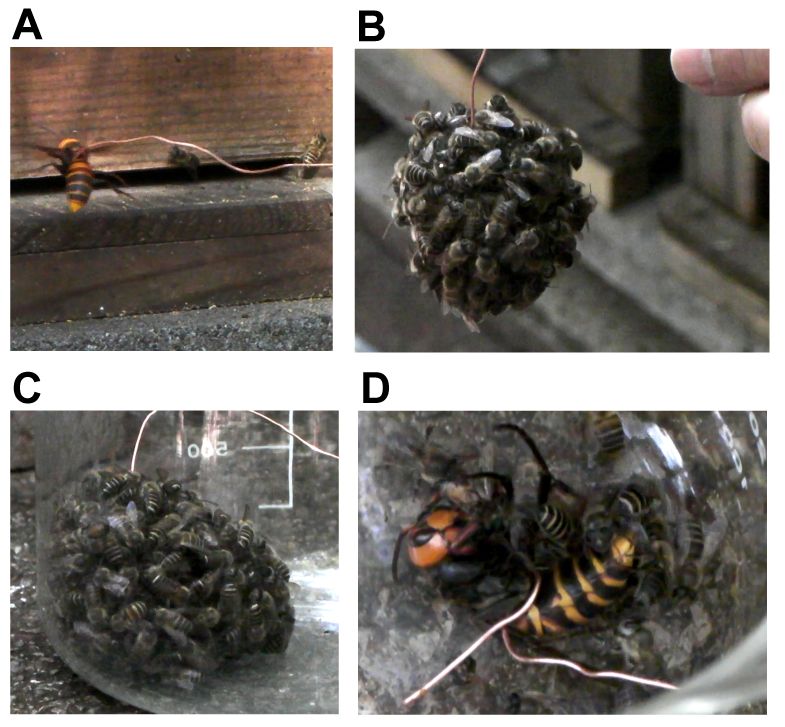Bee Brains Hold Temp Steady to Slow Cook Wasps

The Japanese honeybee and the giant hornet are waging an epic war. The hornets, which can grow up to 1.6 inches (4 centimeters) long, attack the nests of the bees, and the honeybees will surround a hornet and "cook" it.
The honeybees' stingers can't penetrate a hornet's thick outer skin, so the bees swarm around an attacker instead, forming a spherical bee ball, and use their vibrating flight muscles to create heat. The mass of bees will heat the area up to 116 degrees Fahrenheit (47 degrees Celsius), enough to kill the hornet.
Scientists discovered these bee balls in 2005 and have been studying them ever since. Now researchers have figured out the bee-brain mechanism that regulates the thermo-balling behavior in Japanese honeybees but not in their relatives, the European honeybees.
The researchers plucked honeybees from the hot defensive bee ball at different times to see what parts of the brain were active. They found that cells in brain centers involved in complex behaviors were more active when in the hot ball than when the bees were carrying out other activities.
"It might be that the neurons located in this area are also involved in processing thermal information in the worker honeybees," the researchers wrote in the paper, published March 14 in the journal PLoS ONE.
This brain activation was also seen when the bees were exposed to heat, supporting the idea the brain region is sending out directions to keep the bees producing steady heat that's hot enough to kill the hornets, but not themselves. This neural activity wasn't seen in European honeybees.
"Because there is only 3 to 5 C difference [5 to 9 degrees F] in the lethal temperature between the Japanese honeybee and the giant hornet, accurate monitoring and precise control of heat generation during forming a hot defensive bee ball seem critical for the Japanese honeybees," they wrote.
Get the world’s most fascinating discoveries delivered straight to your inbox.
These activated areas "might be involved in thermal information processing, to appropriately regulate the duration of flight muscle vibration and control heat generation during forming the bee ball."
You can follow LiveScience staff writer Jennifer Welsh on Twitter @microbelover. Follow LiveScience for the latest in science news and discoveries on Twitter @livescience and on Facebook.
Jennifer Welsh is a Connecticut-based science writer and editor and a regular contributor to Live Science. She also has several years of bench work in cancer research and anti-viral drug discovery under her belt. She has previously written for Science News, VerywellHealth, The Scientist, Discover Magazine, WIRED Science, and Business Insider.



